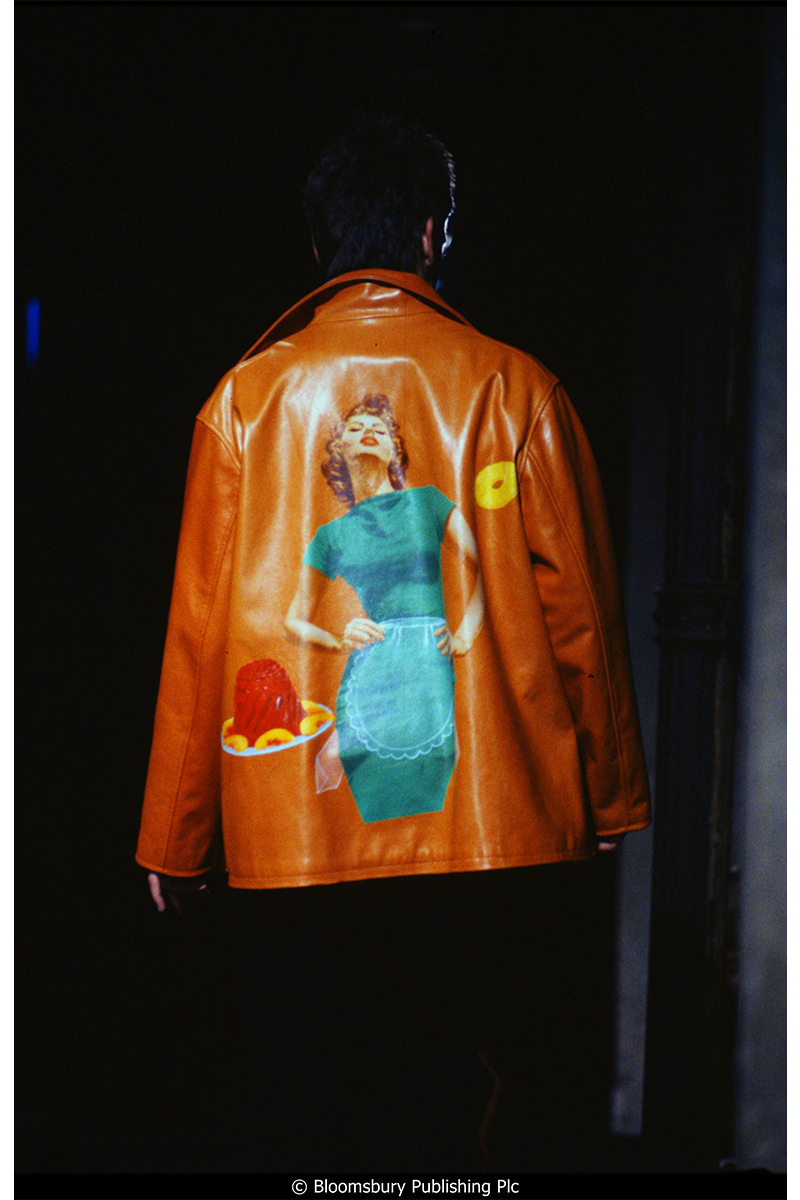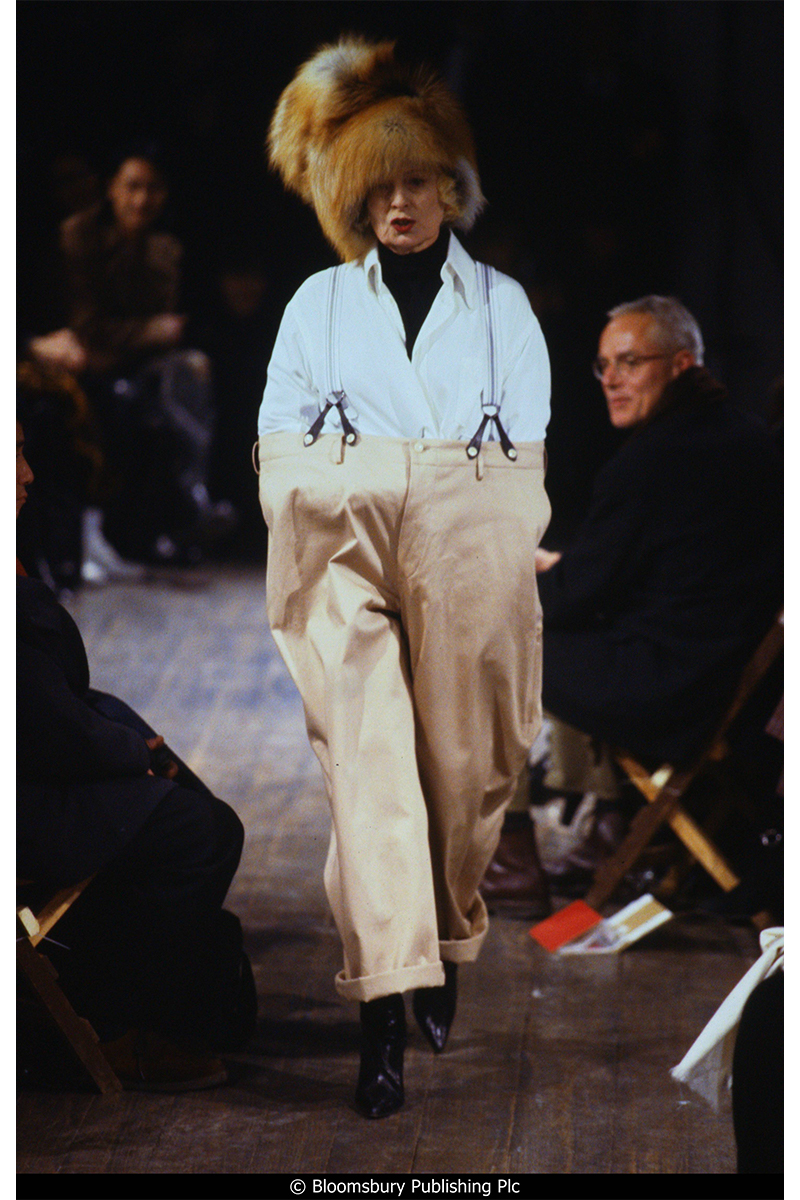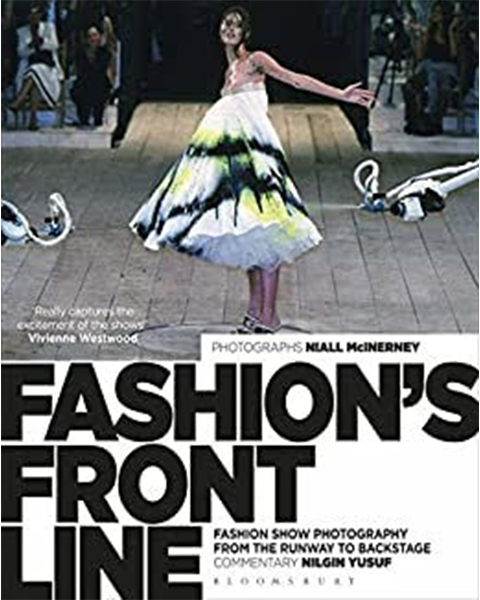TALKING ABOUT ARCHIVES Vol.22
The history of the runway, as told by catwalk photographer Niall McInerney -Yohji Yamamoto-
Niall McInerney is known as a famous photographer who has been taking pictures of the catwalk at the Paris, London, Milan and New York between the latter part of the seventies and the turn of the millennium. What did he feel, working at the forefront that is the catwalk, and in what way did he experience the changing fashions? In this instalment, we will explore the charm of Yohji Yamamoto through some of Niall’s photos.

The leading figure in Anti-Fashion, Yohji Yamamoto
--- Could you first tell us how you ended up becoming a photographer?
“Back in the sixties, I used to be working in London’s Soho district at a strip club as the door boy. The owner of that club walked up to me one day and told me he was planning to put some pictures of the girls working there on the show window at the front of the store. So I ended up taking those pictures. But I didn’t even have a camera at first, and neither did I know how to develop film in the slightest. So what happened is that I went to ask this famous photographer called Lewis Morley, who was so friendly as to lend me a Rolleiflex camera as well as some equipment; that’s how I got started. He became somewhat of a teacher to me. Unfortunately, he already passed away, but we were friends for over 40 years.”

Right: Niall and his girlfriend in the seventies. This picture was taken at the riverside near Camden Town, where his studio is still located.
--- Did you start as a fashion photographer immediately after that?
“At first, I really wanted to become a street photographer. But I soon realized how hard it was to make money doing that kind of work. At that time, I was dating a girl named Melanie. She was friends will this guy called Willy Walter, who had just opened a boutique called Swanky Modes in Camden Town. (Willy Walter is a famous professor and director at the Central Saint Martin BA Fashion course, which produced famous designers like Ricardo Tisci). I started by taking pictures of some dresses for their boutique, and they were also the first brand I took pictures of at the catwalk for their runway show. At first I would only go to the London Collection, but after a while I started getting more clients who asked me to do Paris as well, and then Milan, and so I slowly started to take pictures at all of the major cities.”
--- What was the catwalk like back then compared to now?
“In the fashion world of these days, the cameraman has a set position; shooting from afar with a long telephoto lens. But until around 1995 there used to be a space for the cameramen at the front row near the runway, where they could move freely. Thinking about it, we were probably annoying everyone in the crowd… Because of that special position, every cameraman was literally shooting from a different angle, and every shot was cut differently as well which made it really interesting. I probably don’t even need to tell you this, but before 1999 the digital camera was basically non-existent. That’s why I was always shooting the catwalk with my two Nikon 35mm film cameras. There was no autofocus (the function that automatically finds a focal point to you) either so it was still pretty hard to get the camera to focus right!”
--- Do you remember when designers like Yohji Yamamoto and Rei Kawakubo joined the Paris Collection around 1981?
“Of course I do. I remember some journalist calling their work an ‘explosion in the blanket factory’, that phrase really stuck. It really expressed well the feeling that they took the traditional ideas of how you were supposed to wear clothes and then swung that a whole 180. Of course, not everyone liked it as much as some did, but people like Vogue’s Suzy Menkes expressed it as ‘Fashion’s poet of black’. That struck me as a great compliment. I personally didn’t shoot their first collections. I started shooting Yohji from 1983. Of course, the black fashion and the oversized designs were really impressive, but what struck me was that the way the models walked was completely different. At the time, worthy of the name ‘catwalk’, the models would walk the runway almost as if they were dancing to the resounding music. They’d mostly do poses that would put emphasis on their hip lines. But Yohji and Comme des Garçons were different. I guess the best way to describe the way they walked is monochrome? They were almost like robots, walking without any facial expression, so everyone was shocked. I think a lot of the collections in the early eighties left their mark on history. 1983 was, of course, also the year that Karl (Lagerfield) joined Chanel as their director.”

--- You started shooting men’s collections from 1988, right?
“According to the records I own from Bloomsbury, Yohji started his men’s wear line in 1984. I started shooting the collections in 1988; it’s usually said that it was with this collection that one of Yohji’s standards, his suiting style, finally gained shape. It featured normal men’s suits with slightly bigger buttons, or even armholes; the playful element, which was not usual in businessmen’s suits, was quite refreshing. A story you often hear is that Comme des Garçons, Armani and Yohji together created this kind of ‘New Look’ in the world of men’s suits. Around this period I would also be wearing suits when going out to work, you know?”

“When I look back on Yohji’s collections, one of the pieces I personally loved was this jacket from 1991 with a pinup girl print. This was in the middle of the Gulf War and as a whole the fashion industry was kind of in a slump. The event itself was sized-down and the amount of brands who appeared was also less than normal. Fashion always reflects the period in which it is created. So I think his intent with this collection was also to represent the ideal girl as was thought of around the Second World War, and by doing so demonstrating his anti-war ideas.”

--- Even today, Yohji Yamamoto uses many celebrities and artists as models in his shows. Has his selection of models always been this unique?
“Ever since the 90’s, Yohji’s men’s collections have been using a lot of musicians as well as older people. At the time the stereotype was the ‘supermodel’ so there weren’t that many brands being more individualistic in their choice of models. As a photographer, a lot of these less standard people were actually more photogenic so it was easier to take good photos.”

“One of the things I remember best was that Vivian Westwood appeared on the runway in 1998. I was really suprised that she, being a designer herself, would walk the catwalk for one of her rivals, Yohji. But thinking back on it, it’s not that weird as it seemed then. Both Yohji and Vivian have repeatedly said then would like their clothes to be worn ten years or even more, use them with love as long as possible. If you put it in modern-day terms, they are designing with sustainability in mind, so it’s completely possible that they actually respected each other’s feelings when it comes to designing clothes.”

--- Do you remember the 1999 Spring/Summer women’s wear collection, which is known to be one of the favorite collection of the designer himself?
“I stopped working as a catwalk photographer the year after this collection, in 2000. The main reason was that I couldn’t really get into shooting the catwalk with a digital camera. At the time I would go around more than ten shows in a single day, so if you’d ask me whether I really remember the collection itself clearly the answer would be a no. But I do remember that a peculiarity of this show was that some of the models would be wearing several layers of clothing, which then would then undress to show another; this was of presenting clothes was really refreshing. I think Hussein Chalayan’s show at London in the 2000’s where the models would throw away their almost furniture-like wooden skirts as part of their performance was also slightly inspired by this.”
--- Finally, can you shortly summarize your opinion on Yohji Yamamoto as a brand?
“I am a cameraman, not an editor. In that way it’s kind of difficult for me to talk about clothing and fashion in real detail, but I can tell you that Yohji’s clothes made me want to wear them in the period I was shooting as a job. Many people see him as the representative of anti-fashion, which I think is really true. He doesn’t try to reflect trends. I think that’s why his clothes have become part of the archive and transcend time.”

Niall McInerney
Born in 1941 in Ireland.
From the end of the seventies until 2000,
he worked at the front line of fashion as a catwalk photographer.
One of his publications, Fashion’s Front Line,
which contains carefully selected pictures from his archive,
sold over 5 million items and is used as teaching material in various art schools.
Photo_ NIALL MCLNERNEY
Interview & Text_ SAORI YOSHIDA
Edit_TATSUYA YAMASHIRO
Special Thanks_BLOOMSBURY FASHION CENTRAL
https://www.bloomsburyfashioncentral.com
